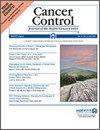胰腺导管内乳头状黏液瘤(IPMN)磁共振成像中的风险评估和放射组学分析
IF 2.5
4区 医学
Q3 ONCOLOGY
引用次数: 0
摘要
导管内乳头状粘液瘤(IPMNs)是患者放射学评估中非常常见的偶然发现。这些病变可能从低度发育不良(LGD)发展为高度发育不良(HGD),甚至发展为胰腺癌。IPMN 进展的风险会随着时间的推移而增加,因此不建议停止监测。鉴别提示 IPMN LGD 的影像学特征非常重要,这样才能将只需仔细观察的病变与需要手术切除的病变区分开来。重要的是要了解管理指南,尤其是手术适应症,以便能在报告中指出提示恶性变性的结果。用于诊断和风险评估的成像工具是计算机断层扫描(CT)和使用造影剂的磁共振成像(MRI)。根据最新的欧洲指南,核磁共振成像是诊断和随访 IPMN 患者的首选方法,因为这种工具在检测壁结节和囊内隔膜方面具有最高的灵敏度。它在诊断与 IPMN 恶性变性相关的令人担忧的特征和高风险标志方面发挥着关键作用。如今,诊断工具的主要限制在于识别胰腺癌前兆的能力。在这种情况下,人工智能(AI)和放射组学分析受到越来越多的关注。然而,考虑到目前已发表研究的局限性,这些工具仍处于探索阶段。主要限制包括不符合人工智能最佳实践、放射组学工作流程标准化以及研究方法的清晰报告,包括分割和数据平衡。在放射学报告中,注意 IPMN 的类型、形态特征、大小、生长速度、壁、隔膜和壁层结节是非常有用的,监测和手术的适应症就是基于这些特征。应报告这些特征,以便根据指南建议监测时间。本文章由计算机程序翻译,如有差异,请以英文原文为准。
Risk Assessment and Radiomics Analysis in Magnetic Resonance Imaging of Pancreatic Intraductal Papillary Mucinous Neoplasms (IPMN)
Intraductal papillary mucinous neoplasms (IPMNs) are a very common incidental finding during patient radiological assessment. These lesions may progress from low-grade dysplasia (LGD) to high-grade dysplasia (HGD) and even pancreatic cancer. The IPMN progression risk grows with time, so discontinuation of surveillance is not recommended. It is very important to identify imaging features that suggest LGD of IPMNs, and thus, distinguish lesions that only require careful surveillance from those that need surgical resection. It is important to know the management guidelines and especially the indications for surgery, to be able to point out in the report the findings that suggest malignant degeneration. The imaging tools employed for diagnosis and risk assessment are Computed Tomography (CT) and Magnetic Resonance Imaging (MRI) with contrast medium. According to the latest European guidelines, MRI is the method of choice for the diagnosis and follow-up of patients with IPMN since this tool has a highest sensitivity in detecting mural nodules and intra-cystic septa. It plays a key role in the diagnosis of worrisome features and high-risk stigmata, which are associated with IPMNs malignant degeneration. Nowadays, the main limit of diagnostic tools is the ability to identify the precursor of pancreatic cancer. In this context, increasing attention is being given to artificial intelligence (AI) and radiomics analysis. However, these tools remain in an exploratory phase, considering the limitations of currently published studies. Key limits include noncompliance with AI best practices, radiomics workflow standardization, and clear reporting of study methodology, including segmentation and data balancing. In the radiological report it is useful to note the type of IPMN so as the morphological features, size, rate growth, wall, septa and mural nodules, on which the indications for surveillance and surgery are based. These features should be reported so as the surveillance time should be suggested according to guidelines.
求助全文
通过发布文献求助,成功后即可免费获取论文全文。
去求助
来源期刊

Cancer Control
ONCOLOGY-
CiteScore
3.80
自引率
0.00%
发文量
148
审稿时长
>12 weeks
期刊介绍:
Cancer Control is a JCR-ranked, peer-reviewed open access journal whose mission is to advance the prevention, detection, diagnosis, treatment, and palliative care of cancer by enabling researchers, doctors, policymakers, and other healthcare professionals to freely share research along the cancer control continuum. Our vision is a world where gold-standard cancer care is the norm, not the exception.
 求助内容:
求助内容: 应助结果提醒方式:
应助结果提醒方式:


